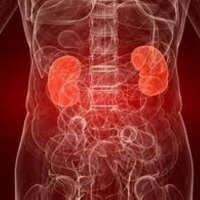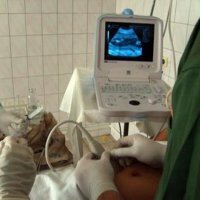Chronic obstructive pulmonary disease, treatment
 The person has the amazing ability to breathe. Our breathing is not such a complicated process, but any violation of it leads to sad results. Without air, life becomes impossible. For people who have had the misfortune to hear the diagnosis - chronic obstructive pulmonary disease, whose treatment is not a joke, breathing is a constant cause for excitement, because the disease is a violation of the air passages in the airways.
The person has the amazing ability to breathe. Our breathing is not such a complicated process, but any violation of it leads to sad results. Without air, life becomes impossible. For people who have had the misfortune to hear the diagnosis - chronic obstructive pulmonary disease, whose treatment is not a joke, breathing is a constant cause for excitement, because the disease is a violation of the air passages in the airways.
Chronic obstructive disease, causes of
There are several reasons for the development of this ailment. The first cause is emphysema. In this alveoli of the lungs increase significantly, which leads to the destruction of their walls. The second reason is the inflammatory process in the respiratory tract. Whatever the reason, as a result, when breathing in, the lungs narrow and interfere with the normal passage of air.
Smoking and working in dusty premises without protective equipment are often the risk factors that lead to chronic obstructive illness. Given the number of smokers in general( and men in particular), it is not surprising that this disease is the most common after diseases of the cardiovascular system. Almost every 15 inhabitants of the world suffer from chronic obstructive pulmonary disease.
As with any disease, timely diagnosis and the earliest treatment are also important here. It is incomparably more difficult to treat a sickness. For diagnosis, spirography is used first. This procedure allows to determine the volume of exhaled air and a number of other indicators on the basis of which it can be assumed that the patient has a chronic obstructive disease.
Chronic disease, signs of
External signs that indicate the development of this disease can be coughing, shortness of breath, a feeling of heaviness in breathing and a wheezing sound in the lower part of the sternum. However, such signs may indicate other related diseases, so special attention should be paid to the presence of risk factors( smoking, harmful working conditions, frequent lung diseases, hereditary predisposition, and others).
The modern approach of physicians to the treatment of this complex disease has changed somewhat. In each case, the causes of chronic obstructive pulmonary disease are completely different and the treatment should be differentiated.
Drug therapy for chronic obstructive pulmonary disease is primarily aimed at improving the patient's condition, reducing symptoms and preventing the development of complications.
Chronic obstructive disease and treatment
In the early stages, the course of the disease is almost invisible. In such a period, increased attention is paid to the prevention of seasonal bronchial and pulmonary diseases, vaccination against influenza. For the removal of acute attacks, if necessary, take medications bronchodilators such as salbutamol, ventolin, terbutaline, berrotek, fenoterol. They increase the permeability of pulmonary respiratory vessels and provide the patient with a normal amount of oxygen. Typically, these drugs are released in the form of metered aerosols. They can be taken by the patients themselves in case of an exacerbation and do not require constant monitoring by a doctor. However, the proper use of inhalers plays an important role, and the effectiveness of the treatment depends to a large extent on this. Therefore, for the first time this procedure should be checked by the doctor to indicate possible inaccuracies.
In a more severe stage of the disease, a second group of drugs is used: glucocorticosteroids, for example, беклазон, бенакорт, бекотид, флисотид, пульмикорт.They are prescribed to improve overall lung function, but their long-term use can lead to various side effects. In addition to this treatment, bronchodilators with a longer period of action are also used. It can be such drugs as serevent, formoterol, tiotropium bromide. But most often used drugs that combine the effects of glucocorticosteroids and bronchodilators. These include such as symbicort or serotide.
In severe forms of chronic obstructive pulmonary disease, ongoing treatment is required. In these cases, together with the treatment with drugs used in the early stages of the disease, oxygen therapy is prescribed, since breathing in this case does not bring sufficient oxygen in the patient's tissue.
In clinical trials, the most effective method of treatment today is the appointment of patients with inhaled steroids( fluticasone) in conjunction with prolonged b2-agonists( salmeterol).These drugs affect the mechanisms of chronic obstructive disease and have an anti-inflammatory effect. As a result of this therapy, it is possible to reduce the dose of medications used.
The latest medicine
One of the newest drugs is fenspiride( Erespal).In addition to good anti-inflammatory properties, it reduces the production of bronchial mucus and reduces swelling, and also has a positive effect on the development of useful microflora. Clinical trials have confirmed the effectiveness of this drug, patients have shortness of breath and cough, improving the patency of the pulmonary ways.
If a progressive infectious disease is observed in the course of the disease, then in addition to the existing treatment, doctors must prescribe antibacterial therapy.
No less important in the treatment of chronic obstructive pulmonary disease is non-drug therapy. This, above all, breathing exercises, normalization of body weight and complete refusal of patients from smoking. As physiotherapeutic procedures, patients with chronic obstructive pulmonary disease are prescribed speleotherapy, inhalations with herbal infusions, massage, ultrasound procedures. In the process of stabilizing the state, sanatorium-and-spa treatment is recommended.
For an effective result, it is necessary to follow all the recommendations of the attending physician and in no case to engage in self-medication.



